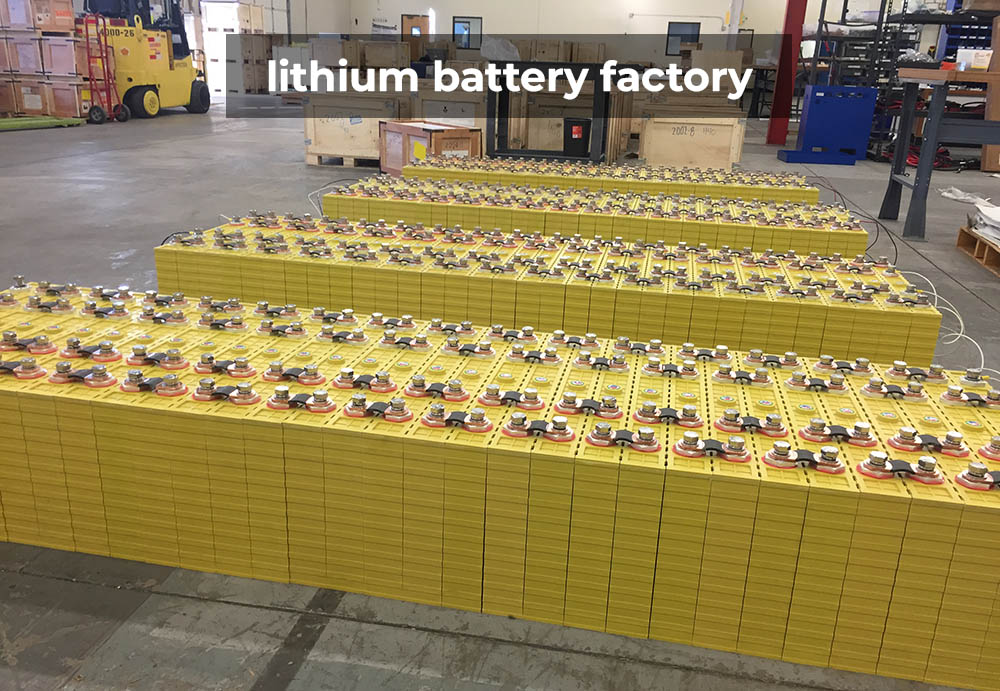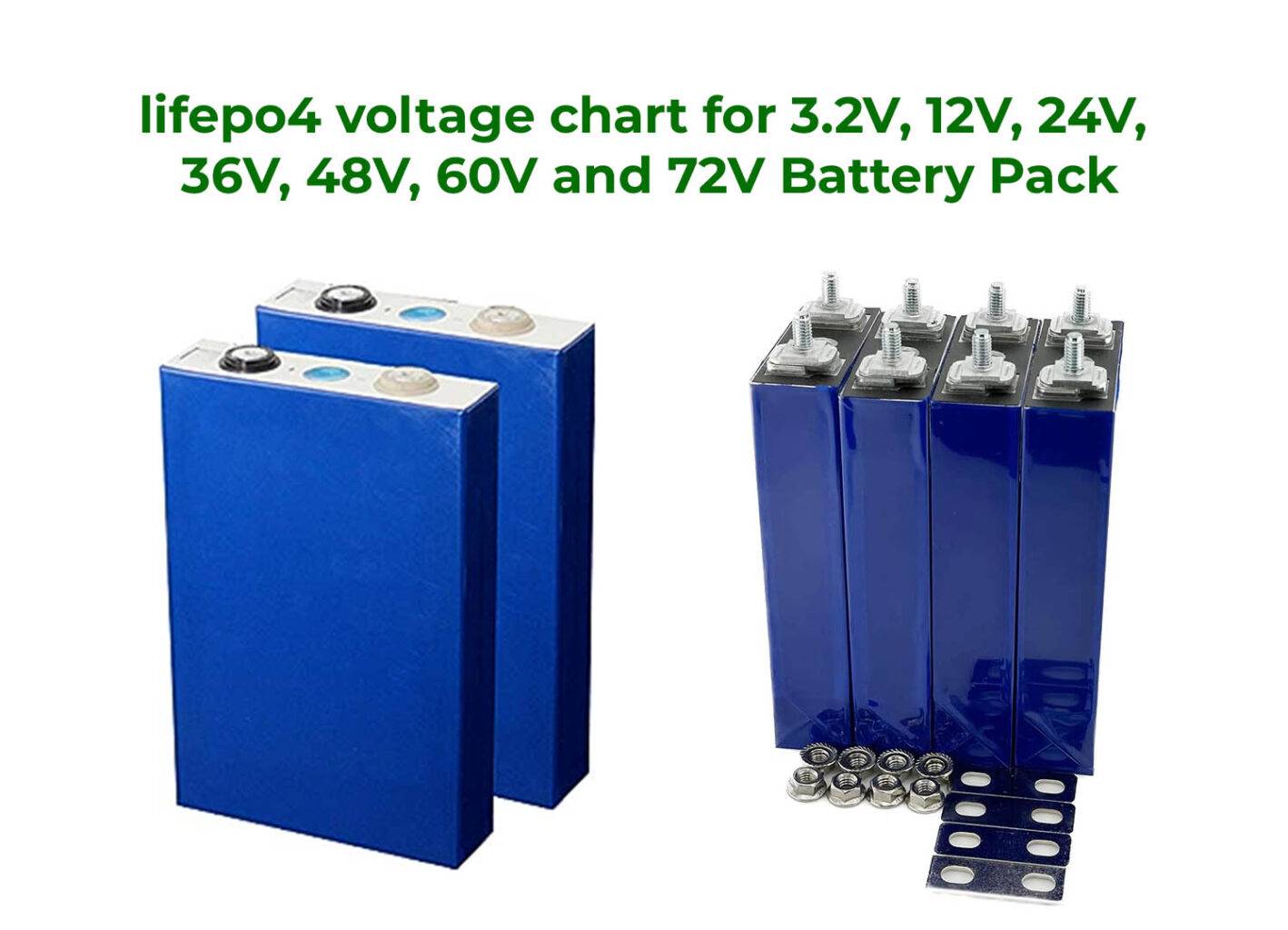Introduction:
LiFePO4 (Lithium Iron Phosphate) and Lithium-ion batteries stand at the forefront of energy storage technologies. The demand for efficient and sustainable power solutions surges. The comparison between LiFePO4 (Lithium Iron Phosphate) and Lithium-ion technologies becomes increasingly relevant. LiFePO4 and Lithium-ion batteries each offer unique sets of advantages and limitations that cater to distinct applications and user preferences. From energy density to safety, cycle life to cost, delving into the intricacies of their differences is crucial for making informed decisions. Here we will discuss lifepo4 vs lithium ion batteries, shedding light on their characteristics, performance, and suitability across various domains. Whether you’re an environmentally-conscious homeowner, a tech-savvy gadget user, or a renewable energy enthusiast. Understanding these battery technologies empowers you to choose the right energy solution that aligns with your needs and aspirations.
LiFePO4 Battery:
A LiFePO4 battery, also known as a Lithium Iron Phosphate battery, is a type of rechargeable battery that uses lithium iron phosphate as its cathode material. It is a member of the broader category of lithium-ion batteries, but it distinguishes itself with its unique chemistry and characteristics.
LiFePO4 batteries are popular for their excellent safety profile, long cycle life, and thermal stability. They are less prone to overheating or thermal runaway compared to some other lithium-ion chemistries, making them a preferred choice in applications where safety is a critical concern.
Due to their stable chemistry, LiFePO4 batteries have gained popularity in stationary energy storage systems, renewable energy installations, uninterruptible power supplies (UPS), and backup power solutions. They are also using in applications where longevity and reliability are essential, such as electric vehicles and industrial equipment.
The trade-off for LiFePO4’s safety and longevity is slightly lower energy density compared to some other lithium-ion chemistries. However, ongoing research and development are focusing on improving energy density without compromising the core benefits of LiFePO4 batteries.
Lithium ion battery:
A Lithium-ion battery, often abbreviated as Li-ion battery, is a type of rechargeable battery that utilizes lithium ions to store and release energy. These batteries are widely using in various applications, from portable electronics like smartphones and laptops to electric vehicles and renewable energy storage systems.
The introductory structure of a Lithium- ion battery consists of three main factors:
- Cathode: The cathode is the positive electrode of the battery and is typically made of a lithium metal oxide compound, such as lithium cobalt oxide (LiCoO2), lithium iron phosphate (LiFePO4), or lithium manganese oxide (LiMn2O4). The cathode’s material determines the battery’s energy density, voltage, and other performance characteristics.
- Anode: The anode is the negative electrode and is typically made of graphite or other carbon-based materials. While charging, lithium ions move from the cathode to the anode, and while discharging, they move back to the cathode.
- Electrolyte: The electrolyte is a conductive solution that allows lithium ions to move between the cathode and anode while maintaining a charge balance. It is a lithium salt dissolved in a solvent.
The movement of lithium ions between the cathode and anode during charging and discharging is what enables the storage and release of energy. This process is reversible, allowing Lithium-ion batteries to be recharged multiple times.
Lithium-ion batteries are known for their high energy density, which means they can store a significant amount of energy in a relatively compact size. This property makes them suitable for portable electronics, where space and weight are crucial factors. Additionally, Lithium-ion batteries have a relatively low self-discharge rate, meaning they can hold their charge for longer periods compared to other types of batteries.
Both LiFePO4 (Lithium Iron Phosphate) and Lithium-ion cells can be connected in Series, Parallel or Combination Series-Parallel and create a battery pack.

Short Table on lifepo4 vs lithium ion:
Here is a table with all the differences between LiFePO4 (Lithium Iron Phosphate) and Lithium-ion batteries:
| Aspect | LiFePO4 | Lithium-ion |
|---|---|---|
| Chemistry | Lithium Iron Phosphate | Various chemistries (NMC, LCO, etc.) |
| Cathode Material | Iron phosphate | Cobalt, nickel, manganese, etc. |
| Anode Material | Carbon | Graphite, silicon, etc. |
| Energy Density | Lower energy density | Higher energy density |
| Cycle Life | Longer cycle life (~2000-7000 cycles) | Variable cycle life (~500-1000 cycles) |
| Safety | Very safe, low risk of thermal events | Moderate safety, risk of overheating |
| Thermal Stability | More stable at high temperatures | Sensitive to high temperatures |
| Charging Speed | Slower charging | Faster charging |
| Discharging Current | Lower discharge current capability | Higher discharge current capability |
| Cost | Generally higher cost | Variable cost |
| Environmental Impact | More environmentally friendly | Concerns about some chemistries |
| Voltage Stability | More stable voltage over charge | Voltage can vary with charge level |
| Self-Discharge Rate | Lower self-discharge rate | Higher self-discharge rate |
| Application Range | Commonly used in stationary apps | Widely used in various applications |
| Weight | Heavier | Lighter |
| Performance in Cold | Reduced performance in cold temps | Better performance in cold temps |
| Efficiency | Slightly lower efficiency | Slightly higher efficiency |
Specific attributes can vary depending on the exact chemistry, manufacturing quality, and other factors.
lifepo4 vs lithium ion Detailed Differences:
Understanding the Chemistry
LiFePO4 batteries are recognized for their stable chemistry. Comprising iron phosphate as the cathode material, they prioritize safety and longevity. On the other hand, Lithium-ion batteries come in various chemistries like NMC (Nickel Manganese Cobalt) and LCO (Lithium Cobalt Oxide), striking a balance between energy density and performance. This diversity in chemistry leads to a range of characteristics and applications.
Performance Dynamics
When it comes to energy density, Lithium-ion batteries steal the spotlight with their higher capacity, enabling compact designs for portable devices and electric vehicles. However, LiFePO4 batteries make up for their slightly lower energy density by excelling in other areas. They exhibit remarkable thermal stability and a significantly lower risk of overheating, making them an optimal choice for environments where safety is paramount, such as stationary energy storage systems.
Safety: LiFePO4 vs Lithium-ion
LiFePO4 (Lithium Iron Phosphate) batteries are widely recognized for their exceptional safety profile as it has strong covalent bonds. Their stable cathode chemistry and robust thermal stability significantly reduce the risk of thermal runaway and overheating. This features makes LiFePO4 batteries a preferred choice in applications where safety is paramount. Such as stationary energy storage and backup power systems.
On the other hand, Lithium-ion batteries offer higher energy density and performance, but the safety of them can vary depending on using the specific chemistry. Some Lithium-ion chemistries, particularly those containing cobalt, may have a higher risk of thermal events. However, advancements in battery management systems like BMS and safety protocols have significantly improved the overall safety of Lithium-ion batteries. This are making them suitable for a wide range of applications with proper precautions.
In summary, LiFePO4 batteries tend to have a stronger safety profile due to their inherent chemistry. Lithium-ion batteries have made strides in safety through improved technology. Which making them safe for many applications as long as appropriate measures are taken to manage their potential risks.
Longevity Matters
Cycle life, the number of charge-discharge cycles a battery can endure before its capacity significantly degrades, is a crucial factor. LiFePO4 batteries shine in this aspect, offering a substantially longer cycle life compared to most Lithium-ion chemistries. This characteristic makes them an excellent choice for applications demanding longevity. For example solar power storage systems and uninterruptible power supplies (UPS).
Charging Speed and Efficiency
Charging Speed:
LiFePO4 Batteries: LiFePO4 batteries are known for their slower charging rates compared to other Lithium-ion chemistries. This slower charging pace is attributed to their lower energy density and inherent material properties. While they might not offer rapid charge replenishment, this characteristic has an upside – the slower charging rate contributes to reduced heat generation, enhancing the battery’s safety profile.
Lithium-ion Batteries: Lithium-ion batteries, with their higher energy density, tend to support faster charging speeds. This advantage is particularly noticeable in consumer electronics and electric vehicles, where rapid charging is essential for convenience and usability. However, the trade-off here is that faster charging can generate more heat, potentially impacting the battery’s overall lifespan and safety.
Efficiency:
LiFePO4 Batteries: LiFePO4 batteries excel in efficiency during both charging and discharging cycles. The slower charging rate contributes to a more controlled energy transfer, minimizing energy losses in the form of heat. This efficiency enhances the battery’s long-term performance and contributes to its extended cycle life. While slower charging might be a drawback in some scenarios, the improved efficiency can lead to lower overall energy consumption.
Lithium-ion Batteries: Lithium-ion batteries often achieve higher charging speeds, which can translate to shorter charging times for devices and vehicles. However, this rapid energy transfer might lead to higher energy losses due to increased heat generation. Additionally, the efficiency of Lithium-ion batteries can vary based on the specific chemistry being used. While they might not be as energy-efficient as LiFePO4 batteries during charge-discharge cycles, their convenience remains a strong point.
Applications Galore
For LiFePO4 Batteries:
- Renewable Energy Storage: LiFePO4 batteries are well-suited for storing energy generated from renewable sources like solar panels or wind turbines. Their long cycle life and stability make them reliable for storing excess energy for later use.
- Backup Power Systems: LiFePO4 batteries provide a dependable source of backup power in case of grid outages. Their safety and longevity ensure consistent performance over time, making them ideal for critical applications.
- Electric Vehicles (EVs): Although less common in EVs compared to other Lithium-ion chemistries, LiFePO4 batteries offer enhanced safety, making them a choice for electric scooters, bikes, and smaller EVs in some cases.
- Marine and RV Applications: The stability and longer cycle life of LiFePO4 batteries make them suitable for marine vessels and recreational vehicles, where durability and consistent power supply are essential.
- Off-Grid Systems: LiFePO4 batteries find their place in off-grid applications such as remote cabins, telecommunications, and isolated installations where reliable energy storage is crucial.
For Lithium-ion Batteries:
- Portable Electronics: Lithium-ion batteries power a wide range of portable devices, including smartphones, laptops, tablets, and wearables due to their high energy density and lightweight design.
- Electric Vehicles (EVs): Lithium-ion batteries, especially those with NMC or NCA chemistries, dominate the electric vehicle market due to their high energy density, allowing for longer driving ranges.
- Power Tools: The compact size and high energy density of Lithium-ion batteries make them a staple in cordless power tools, providing portability and extended usage times.
- Consumer Electronics: Lithium-ion batteries are found in cameras, drones, gaming consoles, and other consumer electronics where compact size, energy density, and rechargeability are key factors.
- Grid-Level Energy Storage: Some Lithium-ion chemistries are employed in grid-level energy storage projects, helping stabilize energy supply and demand on a larger scale.
- Medical Devices: Lithium-ion batteries are used in medical devices like portable oxygen concentrators and electric wheelchairs due to their reliability and ability to provide sustained power.
- Aerospace and Satellites: The lightweight and high energy density of Lithium-ion batteries make them suitable for aerospace applications, including satellites and space probes.

Environmental Footprint
LiFePO4 batteries stand out as an environmentally friendly option, given their iron and phosphate components. In contrast, some Lithium-ion chemistries raise concerns about resource availability and the environmental impact of mining cobalt and other materials.
LiFePO4 batteries contain iron, phosphate, and lithium as key components. The use of iron and phosphate makes them inherently more environmentally friendly compared to batteries containing cobalt or other rare materials. The materials used in LiFePO4 batteries are more readily recyclable, contributing to a circular economy. The iron and phosphate components are less complex to extract and reuse compared to some materials found in Lithium-ion batteries. LiFePO4 batteries are low toxicity and low risk of leakage of harmful substances, making them safer for both human health and the environment.
Environmental impact of Lithium-ion batteries can vary significantly based on the specific chemistry used. Cobalt is a critical component in certain Lithium-ion chemistries. Its extraction and processing can have negative environmental and social implications, making these chemistries less eco-friendly. Lithium-ion batteries can be challenging to recycle due to the diverse materials they contain. Cobalt-rich batteries, in particular, pose recycling challenges that need innovative solutions.
Cost Considerations
Cost remains a pivotal aspect in the choice between these two battery technologies. While LiFePO4 batteries generally come with a higher upfront cost, their longer cycle life and reduced maintenance can often result in a better long-term investment. Lithium-ion batteries, with their varying chemistries and manufacturing processes, offer a range of cost options.
For a rough estimate, the cost of LiFePO4 batteries in the USA could range from around $300 to $800 or more per kilowatt-hour (kWh) of storage capacity. Keep in mind that prices can change over time due to technological advancements, changes in manufacturing processes, and market demand. To get the most accurate and up-to-date information on the cost of LiFePO4 batteries in the USA, I recommend checking with battery suppliers, manufacturers, or distributors.
In case of Lithium-ion, the cost of batteries used in consumer electronics (e.g., laptops, smartphones) can vary from around $5 to $30, depending on the device’s capacity and quality. For electric vehicles (EVs), home energy, commercial and Industrial energy storage batteries was around $200 to $800 per kWh.
Weight: LiFePO4 vs Lithium-ion
LiFePO4 batteries tend to be on the heavier side compared to some other battery technologies, including certain Lithium-ion chemistries. This is primarily due to the components used in their construction. The iron phosphate cathode material and other components contribute to a higher overall weight. While this might be a concern in applications where weight is a critical factor, such as portable electronics, it’s important to note that LiFePO4 batteries offer other advantages like safety, longevity, and stability.
Lithium-ion batteries, on the other hand, have a broader range of chemistries and designs, which can lead to varying weights. Some Lithium-ion chemistries, such as those utilizing cobalt-based cathodes, are known for their high energy density but can be relatively heavier. On the contrary, other chemistries like lithium iron phosphate (LiFePO4) variants tend to be lighter. Lithium-ion batteries are often chosen for applications where weight is a critical factor, like smartphones, laptops, and electric vehicles.
Conclusion
As technology advances and energy demands evolve, choosing between LiFePO4 and Lithium-ion batteries becomes more critical than ever. Each technology possesses a unique set of attributes. This attributes align with specific requirements, whether it’s safety, energy density, cycle life, or cost-effectiveness. By understanding the differences between LiFePO4 and Lithium-ion batteries, you empower yourself. You can make make choices that suit your energy storage needs and contribute to a sustainable energy future. So, whether you’re building a renewable energy system or looking for a high-performance portable device, remember that the battery you choose holds the power to shape your energy landscape.






